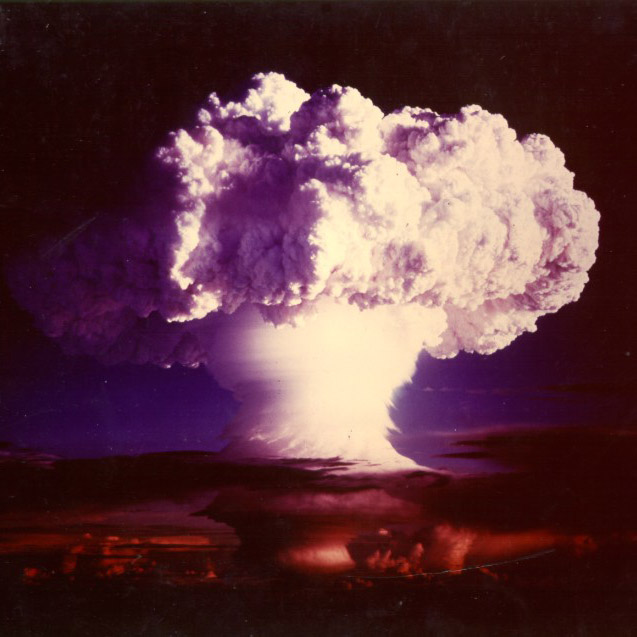Einsteinium
99
Es
Gruppe
n/a
Periode
7
Block
f
Protonen
Elektronen
Neutronen
99
99
153
Generelle Eigenschaften
Ordnungszahl
99
Atommasse
[252]
Massenzahl
252
Kategorie
Actinoide
Farbe
n/a
Radioaktiv
Ja
Named after Albert Einstein
Kristallstruktur
n/a
Geschichte
Einsteinium was discovered as a component of the debris of the first hydrogen bomb explosion in 1952.
It was identified by Albert Ghiorso and co-workers at the University of California, Berkeley in collaboration with the Argonne and Los Alamos National Laboratories, in the fallout from the Ivy Mike nuclear test.
The new element was produced by the nuclear explosion in miniscule amounts by the addition of 15 neutrons to uranium-238.
It was identified by Albert Ghiorso and co-workers at the University of California, Berkeley in collaboration with the Argonne and Los Alamos National Laboratories, in the fallout from the Ivy Mike nuclear test.
The new element was produced by the nuclear explosion in miniscule amounts by the addition of 15 neutrons to uranium-238.
Elektronen pro Schale
2, 8, 18, 32, 29, 8, 2
Elektronenkonfiguration
[Rn] 5f11 7s2
Einsteinium is the first divalent metal in the actinide series
Physikalische Eigenschaften
Aggregatzustand
Fest
Dichte
8,84 g/cm3
Schmelzpunkt
1133,15 K | 860 °C | 1580 °F
Siedepunkt
-
Schmelzwärme
n/a
Verdampfungswärme
n/a
Spezifische Wärmekapazität
-
Häufigkeit in der Erdkruste
n/a
Häufigkeit im Universum
n/a

Danksagungen für Bilder: Wikimedia Commons (National Nuclear Security Administration)
Einsteinium was first observed in the fallout from the Ivy Mike nuclear test
CAS-Nummer
7429-92-7
PubChem CID-Nummer
n/a
Atomeigenschaften
Atomradius
-
Kovalenter Radius
-
Elektronegativität
1,3 (Pauling-Skala)
Ionisierungsenergie
6,42 eV
Molares Volumen
28,5 cm3/mol
Wärmeleitfähigkeit
0,1 W/cm·K
Oxidationszustände
2, 3
Anwendung
Einsteinium is mainly used for scientific research purposes.
The rare isotope einsteinium-254 is favored for production of ultraheavy elements.
Einsteinium-254 was used as the calibration marker in the chemical analysis spectrometer of the Surveyor 5 lunar probe.
The rare isotope einsteinium-254 is favored for production of ultraheavy elements.
Einsteinium-254 was used as the calibration marker in the chemical analysis spectrometer of the Surveyor 5 lunar probe.
Einsteinium is harmful due to its radioactivity
Isotope
Stabile Isotope
-Instabile Isotope
240Es, 241Es, 242Es, 243Es, 244Es, 245Es, 246Es, 247Es, 248Es, 249Es, 250Es, 251Es, 252Es, 253Es, 254Es, 255Es, 256Es, 257Es, 258Es